- Home
- Kim Newman
The Other Side of Midnight Page 2
The Other Side of Midnight Read online
Page 2
Might-have-beens and the dead. Bad company.
John Lennon was truly dead, too. Less than a month ago, in New York, he had taken a silver bullet through the heart, a cruel full stop for the 1970s, for what was left of the 1960s. Annie Wilkes, Lennon’s killer, said she was the musician’s biggest fan, but that he had to die for breaking up the Beatles. Geneviève didn’t know how long Lennon had been a vampire, but she sadly recognised in the dirge “Imagine” that copy-of-a-copy voidishness characteristic of creatives who turned to prolong their artistic lives but found the essential thing that made them who they were-that powered their talent-gone, and that the best they could hope for was a kind of rarefied self-plagiarism. Mad Annie might have done John a favour, making him immortal again. Currently the most famous vampire slayer in the world, she was a heroine to the bedrock strata of warm America that would never accept nosferatu as even kissing cousins to humanity.
What, she wondered as the sun touched the sky, would this new decade bring?
Count Dracula
A Screenplay by Herman J. Mankiewicz and Orson Welles
Based on the Novel by Bram Stoker
Nov. 30,1939
Fade In
1. Ext. Transylvania-Faint Dawn-1883
Window, very small in the distance, illuminated All around this an almost totally black screen. Now, as the camera moves slowly towards this window, which is almost a postage stamp in the frame, other forms appear, spiked battlements, vast granite walls, and now, looming up against the still-nighted sky, enormous iron grill work.
Camera travels up what is now shown to be a gateway of gigantic proportions and holds on the top of it-a huge initial “D” showing darker and darker against the dawn sky. Through this and beyond we see the gothic-tale mountaintop of Dracula’s estate, the great castle a silhouette at its summit, the little window a distant accent in the darkness.
Dissolve
(A series of setups, each closer to the great window, all telling something of:) 2. The Literally Incredible Domain of Vlad, Count Dracula Its right flank resting for forty miles along the Borgo Pass, the estate truly extends in all directions farmer than the eye can see. An ocean of sharp treetops, with occasionally a deep rift where there is a chasm. Here and there are silver threads where the rivers wind in deep gorges through the forests. Designed by nature to be almost completely vertical and jagged-it was, as will develop, primordial forested mountain when Dracula acquired and changed its face-it is now broken and shorn, with its fair share of carved peaks and winding paths, all man-made.
Castle Dracula itself-an enormous pile, compounded of several demolished and rebuilt structures, of varying architecture, with broken battlements and many towers-dominates the scene, from the very peak of the mountain. It sits on the edge of a very terrible precipice.
Dissolve
3. The Village
In the shadows, literally the shadows, of the mountain. As we move by, we see that the peasant doors and windows are shuttered and locked, with crucifixes and obscene clusters of garlic as further protection and sealing. Eyes peep out, timid, at us. The camera moves like a band of men, purposeful, cautious, intrepid, curious.
Dissolve
4. Forest of Stakes
Past which we move. The sward is wild with mountain weeds, the stakes tilted at a variety of Dutch angles, the execution field unused and not seriously tended for a long time.
Dissolve
5. What Was Once a Good-Sized Prison Stockade
All that now remains, with one exception, are the individual plots, surrounded by thorn fences, on which the hostages were kept, free and yet safe from each other and the landscape at large. (Bones in several of the plots indicate that here there were once human cattle, kept for blood.) Dissolve
6. A Wolf Pit
In the f.g., a great shaggy dire wolf, bound by a silver chain, is outlined against the fawn murk. He raises himself slowly, with more thought than an animal should display, and looks out across the estates of Count Dracula, to the distant light glowing in the castle on the mountain. The wolf howls, a child of the night, making sweet music.
Dissolve
7. A Trench Below the Walls
A slow-scuttling armadillo. A crawling giant beetle. Reflected in the muddy water-the lighted window.
Dissolve
8. The Moat
Angled spears sag. An old notebook floats on the surface of the water-its pages covered in shorthand scribble. As it moves across the frame, it discloses again the reflection of the window in the castle, closer than before.
Dissolve
9. A Drawbridge
Over the wide moat, now stagnant and choked with weeds. We move across it and through a huge rounded archway into a formal courtyard, perhaps thirty feet wide and one hundred yards deep, which extends right up to the very wall of the castle. Let’s see Toland keep all of it in focus. The landscaping surrounding it has been sloppy and casual for centuries, but this particular courtyard has been kept up in perfect shape.. As the camera makes its way through it, towards the lighted window of the castle, there are revealed rare and exotic blooms of all kinds: mariphasa lupino lumino, strange orchid, audriensis junior, triffidus celestus. The dominating note is one of almost exaggerated wildness, sprouting sharp and desperate-rot, rot, rot The Hall of the Mountain King, the night the last troll died. Some of the plants lash out, defensively.
Dissolve
10. The Window
Camera moves in until the frame of the window fills the frame of the screen. Suddenly the light within goes out. This stops the action of the camera and cuts the music (Bernard Herrmann) which has been accompanying the sequence. In the glass panes of the window we see reflected the stark, dreary mountainscape of the Dracula estate behind and the dawn sky.
Dissolve
11. Int. Corridor in Castle Dracula-Faint Dawn-1885
Ornate mirrors line both walls of the corridor, reflecting arches into infinity. A bulky shadow figure-Dracula-proceeds slowly, heavy with years, through the corridor. He pauses to look into the mirror, and has no reflection, no reflections, to infinity. It seems at last that he is simply not there.
Dissolve
12. Int. Dracula’s Crypt-Faint Dawn-1885
A very long shot of Dracula’s enormous catafalque, silhouetted against the enormous window.
Dissolve
13. Int. Dracula’s Crypt-Faint Dawn-1885
An eye. An incredible one. Big impossible drops of bloody tears, the reflections of figures coming closer, cutting implements raised. The jingling of sleigh bells in the musical score now makes an ironic reference to Indian temple bells-the music freezes-DRACULA’S OLD VOICE
Rose’s blood!
The camera pulls back to show the eye in the face of the old Dracula, bloated with blood but his stolen youth lost again, grey skin parchmented like a mummy, fissures cracking open in the wrinkles around his eyes, fang-teeth too large for his mouth, pouching his cheeks and stretching his lips, the nose an improbable bulb. A flash-the descent of a guillotine-like kukri knife, which has been raised above Dracula’s neck-across the screen. The head rolls off the neck and bounds down two carpeted steps leading to the catafalque, the camera following. The head falls off the last step onto the marble floor where it cracks, snaky tendrils of blood glittering in the first ray of the morning sun. This ray cuts an angular pattern across the floor, suddenly crossed with a thousand cruciform bars of light as a dusty curtain is wrested from the window.
14. The Foot of Dracula’s Catafalque
The camera very close. Outlined against the uncurtained window we can see a form-the form of a man, as he raises a bowie knife over his head. The camera moves down along the catafalque as the knife descends into Dracula’s heart, and rests on the severed head. Its lips are still moving. The voice, a whisper from the grave DRACULA’S OLD VOICE
Rose’s blood!
In the sunlight, a harsh shadow cross falling upon it, the head lap-dissolves into a fanged, eyeless sku
ll.
Fade Out
Count Dracula Cast and Credits, as of January 1940
Production Company: Mercury Productions. Distributor: RKO Radio Pictures. Executive Producer: George J. Schaefer. Producer Orson Welles. Director Orson Welles. Script: Herman J. Mankiewicz, Orson Welles. From the novel by Bram Stoker. Director of Photography: Gregg Toland. Editors: Mark Robson, Robert Wise. Art Director: Van Nest Polglase. Special Effects: Vernon L. Walker. Music/Musical Director: Bernard Herrmann.
Orson Welles (Dracula), Joseph Cotton (Jedediah Renfield), Everett Sloane (Van Helsing), Dorothy Comingore (Mina Murray), Robert Coote (Artie Holmwood), William Alland (Jon Harker), Agnes Moorehead (Mrs. Westenra), Lucille Ball (Lucy), George Couloris (Dr. Walter Parkes Seward), Paul Stewart (Raymond, Asylum Attendant), Alan Ladd (Quincey P. Morris), Fortunio Bonanova (InnKeeper at Bistritz), Vladimir Sokoloff (Szekeley Chieftain), Dolores Del Rio, Ruth Warrick, Rita Cansino (Vampire Brides), Gus Schilling (Skipper of the Demeter).
“Mademoiselle Dieudonné,” intoned the voice on her answering machine, halfway between a growl and a purr, “this is Orson Welles.”
The voice was deeper even than in the 1930s, when he was a radio star. Geneviève had been in America over Halloween, 1938, when Welles and the Mercury Theatre of the Air broadcast their you-are-there dramatisation of H. G. Wells’s “The Flowering of the Strange Orchid” and convinced half the Eastern seaboard that the country was disappearing under a writhing plague of vampire blossoms. She remembered also the rhetorical whisper of “who knows what evil lurks in the hearts of men?,” followed by the triumphant declaration “the Shadow knows!” and the low chuckle which rose by terrifying lurches to a fiendish, maniacal shriek of insane laughter.
When she had first met the man himself, in Rome in 1959, the voice hadn’t disappointed. Now, even on cheap tape and through the tinny, tiny amplifier, it was a call to the soul. Even hawking brandy or frozen peas, the voice was a powerful instrument That Welles had to compete with Welles imitators for gigs as a commercial pitchman was one of the tragedies of the modern age. Then again, she suspected he drew a deal of sly enjoyment from his long-running role as a ruined titan. As an actor, his greatest role was always himself. Even leaving a message on a machine, he invested phrases with the weight-a quality he had more than a sufficiency of-of a Shakespearean deathbed speech.
“There is a small matter upon which I should like your opinion, in your capacities as a private detective and a member of the undead community. If you would call on me, I should be most grateful.”
She thought about it. Welles was as famous for being broke as for living well. It was quite likely he wouldn’t even come through with her modest rate of a hundred dollars a day, let alone expenses.
And gifts of rare wine or Cuban cigars weren’t much use to her, though she supposed she could redeem them for cash.
Still, she was mildly bored with finding lost children or bail jumpers. And no one ever accused Welles of being boring. He had left the message while she was resting through the hours of the day.
This was the first of the ten or so days between the Gregorian 1980s and the Julian 1980s. She could afford to give a flawed genius-his own expression-that much time.
She would do it.
In leaving a message, Welles had given her a pause to think. She heard heavy breaths as he let the tape run on, his big man’s lungs working. Then, confident that he had won her over, he cut in with address details, somewhere in Beverly Hills.
“I do so look forward to seeing you again. Until then, remember… the weed of crime bears bitter fruit!”
It was one of his old radio catchphrases.
He did the laugh, the King laugh, the Shadow laugh. It properly chilled her bones, but made her giggle, too.
She discovered Orson Welles at the centre of attention, on the cracked bottom of a drained pool behind a rented bungalow. Three nude vampire girls waved objects-a luminous skull, a Macbethian blooded dagger, a fully articulated monster-bat puppet-at him, darting swiftly about his bulky figure, nipping at his head with their Halloween props. The former boy wonder was on his knees, enormous Russian shirt open to the waist, enormous (and putty) nose glistening under the lights, enormous spade-beard flecked with red syrup. A man with a handheld camera, the sort of thing she’d seen used to make home movies, circled the odd quartet, not minding if the vampires got between him and his director-star.
A few other people were around the pool, holding up lights. No sound equipment, though: this was being shot silent. Geneviève hung back, by the bungalow, keeping out of the way of the work.
She had been on film sets before, at Cinecittà and in Hollywood, and knew this crew would be deemed skeletal for a student short. If anyone else was directing, she’d have supposed he was shooting makeup tests or a rehearsal. But with Welles, she knew that this was the real film. It might end up with the dialogue out of sync, but it would be extraordinary.
Welles was rumbling through a soliloquy.
It took her a moment to realise what the undead girls were doing, then she had to swallow astonished laughter. They were nude not for the titillation of an eventual audience, for they wouldn’t be seen. Nonreflecting nosferatu would be completely invisible when the footage was processed.
The girls were naked because clothes would show up on film, though some elders-Dracula had been one-so violated the laws of optics that they robbed any costume they wore of its reflection also, sucking even that into their black hearts. In the final film, Welles would seem to be persecuted by malignly animated objects-the skull, the dagger, and the bat Now he tore at his garments and hair like Lear, careful to leave his nose alone, and called out to the angry heavens. The girls flitted, slender and deathly white, not feeling the cold, faces blank, hands busy.
This was the cheapest special effect imaginable.
Welles fell forward on his face, lay still for a couple of beats, and hefted himself upright, out of character, calling “cut.” His nose was mashed.
A dark woman with a clipboard emerged from shadows to confer with the master. She wore a white fur coat and a matching hat. The vampire girls put the props down and stood back, nakedness unnoticed by the crew members. One took a cloak-like robe from a chair and settled it over her slim shoulders. She climbed out of the pool.
Geneviève had not announced herself. The vampire girl fixed her eye. She radiated a sense of being fed up with the supposed glamour of show business.
“Turning was supposed to help my career,” she said. “I was going to stay pretty forever and be a star. Instead, I lost my image. I had good credits. I was up for the last season of Charlie’s Angels.
I’d have been the blonde.”
“There’s always the theatre,” Geneviève suggested.
“That’s not being a star,” the girl said.
She was obviously a newborn, impatient with an eternity she didn’t yet understand. She wanted all her presents now, and no nonsense about paying dues or waiting her turn. She had cropped blonde hair; very pale, almost translucent skin stretched over bird-delicate bones; and a tight, hard, cute little face, with sharp angles and glinting teeth, small reddish eyes. Her upper arm was marked by parallel claw marks, not yet healed, like sergeant’s stripes. Geneviève stored away the detail.
“Who’s that up there, Nico?” shouted one of the other girls.
Nico? Not the famous one, Geneviève supposed.
“Who?” the girl asked, out loud. “Famous?”
Nico-indeed, not the famous one-had picked the thought out of Geneviève’s mind. That was a common elder talent, but unusual in a newborn. If she lasted, this girl might do well. She’d have to pick a new name though, to avoid confusion with the singer of “All Tomorrow’s Parties.”
“Another one of us,” the starlet said to the girl in the pool. “An invisible.”
“I’m not here for a part,” Geneviève explained. “I’m here to see Mr. Welles.”
Nico looked at her askew. Why would a v
ampire who wasn’t an actress be here? Tumblers worked in the newborn’s mind. It worked both ways: Nico could pick words up, but she also sent them out. The girls in the pool were named Mink and Vampi (please!), and often hung with Nico.
“You’re old, aren’t you?”
Geneviève nodded. Nico’s transparent face showed eagerness.
“Does it come back? Your face in the mirror?”
“Mine hasn’t.”
Her face fell, a long way. She was a loss to the profession.
Her feelings were all on the surface, projected to the back stalls.
“Different bloodlines have different qualities,” Geneviève said, trying to be encouraging.
“So I heard.”
Nico wasn’t interested in faint hopes. She wanted instant cures.
“Is that Mademoiselle Dieudonné?” roared the familiar voice.
“Yes, Orson, it’s me,” she said.
Nico reacted, calculating. She was thinking that Geneviève might be an important person.
“Then that’s a wrap for the evening. Thank you, people. Submit your expenses to Oja, and be back here tomorrow night, at midnight sharp. You were all stupendous.”

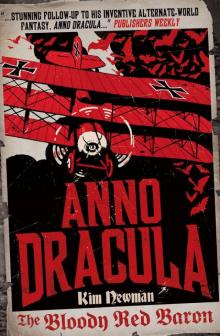 The Bloody Red Baron
The Bloody Red Baron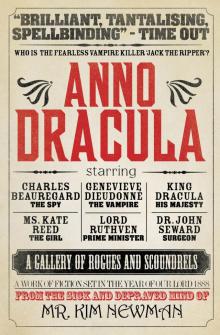 Anno Dracula
Anno Dracula Dracula Cha Cha Cha
Dracula Cha Cha Cha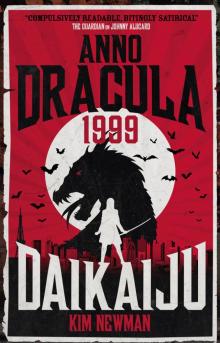 Anno Dracula 1999
Anno Dracula 1999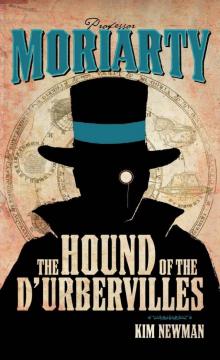 Moriarty: The Hound of the D'Urbervilles
Moriarty: The Hound of the D'Urbervilles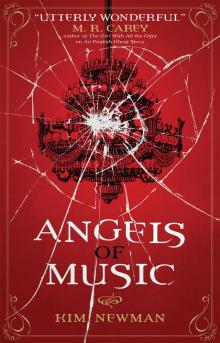 Angels of Music
Angels of Music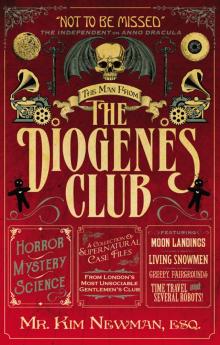 The Man From the Diogenes Club
The Man From the Diogenes Club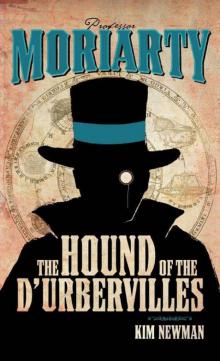 Professor Moriarty: The Hound Of The D’urbervilles
Professor Moriarty: The Hound Of The D’urbervilles The Night Mayor
The Night Mayor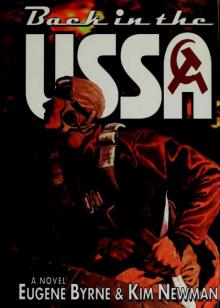 Back in the USSA
Back in the USSA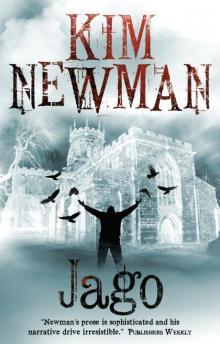 Jago
Jago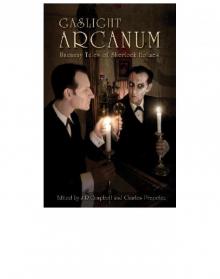 Gaslight Arcanum: Uncanny Tales of Sherlock Holmes
Gaslight Arcanum: Uncanny Tales of Sherlock Holmes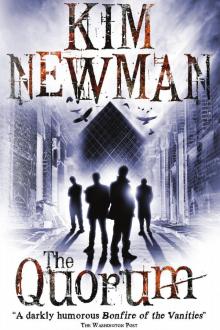 The Quorum
The Quorum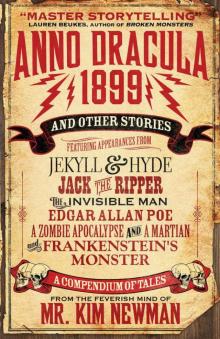 Anno Dracula 1899 and Other Stories
Anno Dracula 1899 and Other Stories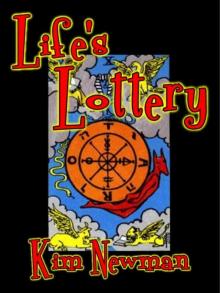 Life's Lottery
Life's Lottery The Secrets of Drearcliff Grange School
The Secrets of Drearcliff Grange School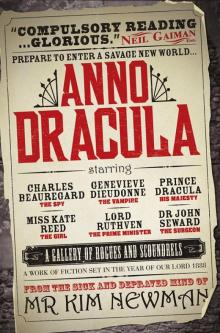 Anno Dracula ad-1
Anno Dracula ad-1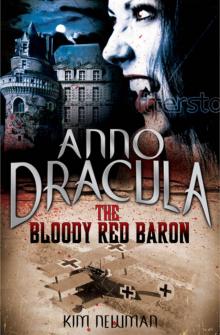 The Bloody Red Baron: 1918 ad-2
The Bloody Red Baron: 1918 ad-2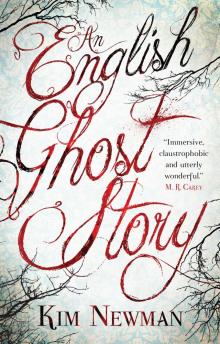 An English Ghost Story
An English Ghost Story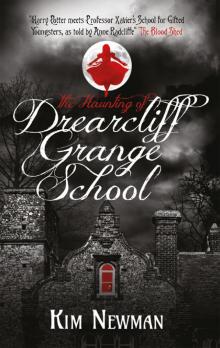 The Haunting of Drearcliff Grange School
The Haunting of Drearcliff Grange School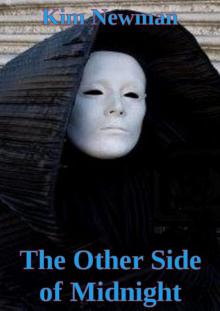 The Other Side of Midnight
The Other Side of Midnight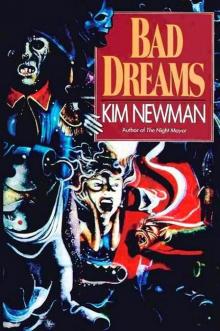 Bad Dreams
Bad Dreams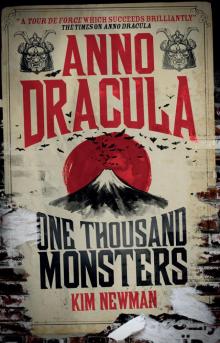 Anno Dracula--One Thousand Monsters
Anno Dracula--One Thousand Monsters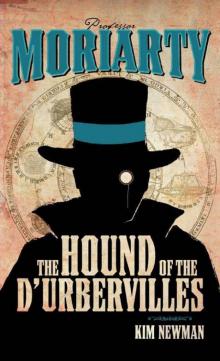 The Hound Of The D’urbervilles
The Hound Of The D’urbervilles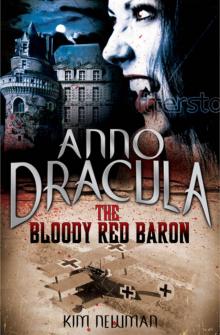 The Bloody Red Baron: Anno Dracula 1918
The Bloody Red Baron: Anno Dracula 1918